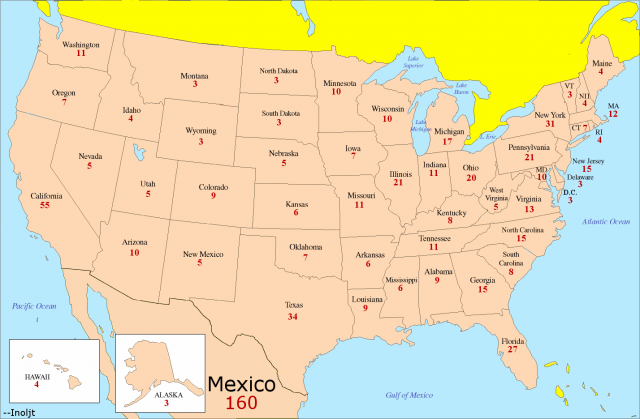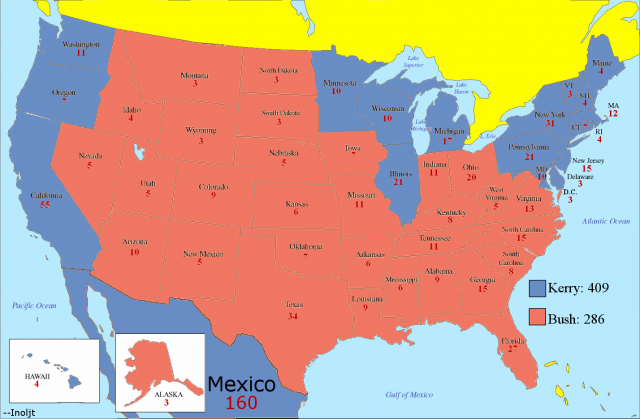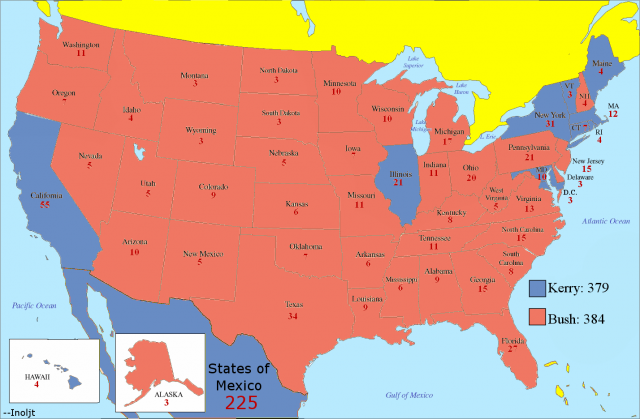Right now, Massachusetts redistricting is just a big guessing game. John Olver, the oldest member of the Massachusetts delegation and arguably the easiest to get rid of, has said he’s running for re-election, and his allies in the state legislature probably aren’t rushing to press him for retirement. Speculation has turned to which member of Congress will run against Scott Brown, because that would solve the problem of whose district to eliminate. But what if no one runs against him? None of the Mass congresscritters are really that ballsy, and if rumors are true that John Kerry is going to be tapped for SoS and create an easier shot at an open seat, it makes sense that they would be biding their time. So what if every incumbent files for re-election? What would the legislature do?
More after the flip.
Although I admittedly have little to back up this theory, I propose the possibility that John Tierney could be the lucky winner. Fairly or unfairly, he has an ethical cloud over him because of his wife, and he represents the second-most Republican district in the state. While the folks on Beacon Hill are far from squeaky clean themselves, the ethics problems combined with an aversion to having to prop him up should his problems get worse could provide motivation to eliminate his district. Admittedly, given the location of the district, it’s a bit hard to slice it up in a way that won’t give Tierney a shot at re-election. But this map should make his life a lot harder, and his ethics problems combined with establishment support for the other nine congresscritters and his district being split up should mean that there will be no Tierney in 2013.
In addition to eliminating Tierney, this map also attempts to shore up relatively shaky Democratic incumbents.





MA-01 Incumbent: John Olver (D-Amherst
This district mostly stays the same, although it drops Westfield and West Springfield and gains the college towns of Northampton and South Hadley, in addition to some R-friendly Worcester suburbs. In the end it should be about a wash and not much changed from the current D+14. Still safe, even for someone as liberal as Olver.
MA-02 Incumbent: Richard Neal (D-Springfield
Drops its stupid tail into Northampton and South Hadley and gains West Springfield and Westfield, as well as some more Worcester suburbs. It probably becomes a bit more Republican, but nothing too intense, going from D+9 to maybe D+6 or 7 (note that the most Democratic Republican-held district outside of IL, even after 2010, is D+4, and this area is not nearly as traditionally Republican as PA-06 or IL-10). Neal’s a big boy and he clearly wants to appeal to Republicans with his douchey praise of Scott Brown and conservadem record, so he’ll be alright.
MA-03 Incumbent: Jim McGovern (D-Worcester)
Drops some more Worcester suburbs, gains Framingham/Natick, and now contains the vast majority of Fall River. It was already D+9 and gets even safer. Sorry, Republicans, this one’s Safe D even in a 2010 repeat, and might have even voted for Coakley (I’m not sure).
MA-04 Incumbent: Barney Frank (D-Newton)
This is my favorite district just because it has 0 population deviation. Delicious! Frank represents a D+14 district and won by double digits in the worst Dem year imaginable against a legitimate opponent, so he can afford to take one for the team. He drops most of his part of Fall River and gains some conservative Plymouth County towns. Nevertheless, he retains the liberal Jewish Democratic strongholds of Brookline, Newton, and Sharon as well as the working-class Dem cities of Taunton and New Bedford. He even gains a few precincts from liberal Needham. At the very worst this should be like D+9 or 10, still more than safe.
MA-05 Incumbent: Niki Tsongas (D-Lowell)
And now we start with the dismantling of Tierney. I didn’t want to weaken Tsongas too much; although she won by double-digits in 2010, that was the second-weakest incumbent congressman performance in Massachusetts, only behind Barney Frank. And while Barney Frank faced a fairly strong challenger, Tsongas only had to deal with a some dude. Besides, she won by a surprisingly narrow single-digit margin in her first election to the seat in 2007. So I gave her solidly Dem parts of Tierney’s district like Bedford and Newburyport while retaining heavily Hispanic Lawrence and liberal MetroWest suburbs like Acton and Concord, while adding new ones like Lexington and half of Waltham (including Brandeis University). Tsongas should be able to breathe easier now.
MA-06: Incumbent: John Tierney (D-Salem), Ed Markey (D-Malden)
And now the dismantling of John Tierney really begins. This district eats up Republican parts of Tierney’s old district, but also includes Tierney’s hometown of Salem as well as Democratic suburbs from Markey’s district like Medford, Malden, and Arlington. It also contains the other half of Waltham, including Bentley University. This district contains about ~250,000 people or so from Tierney’s district, but it should contain more from Markey’s (it also contains a few ten thousand people from Tsongas’). Given that Markey will have the establishment behind him and is a superior fundraiser (unlike Tierney, Markey wasn’t in a competitive race at all and still outraised Tierney more than 3-to-2), not to mention Markey’s part of the district is more Democratic and will have disproportionate pull in a primary, I wouldn’t call this a viable option for Tierney. After Markey beats Tierney, he should be golden in the general; even though this district will drop from D+15 to D+10 or 11, Markey won 2-1 in a year when many Dem incumbents in safe districts were held to below 60.
MA-07 Incumbent: Michael Capuano (D-Somerville)
Aside from the new 6th, this is the district with the most of Tierney’s territory. Again, it’s safe D in the general, as it adds heavily Democratic Lynn from Tierney’s district and retains Cambridge, Somerville, Allston-Brighton, Back Bay, and Fenway (bounded by JP to the south and Northeastern University’s campus to the east). All of those areas will have disproportionate pull in a primary, and with the exception of Lynn, they will all support Capuano. As with Markey, Capuano should easily dominate Tierney in fundraising, as he raised $3.7 million dollars in his unsuccessful Senate primary campaign (Tierney only raised about a million dollars in his whole 2010 House campaign). In 2006, when both Tierney and Capuano faced Some Dude opponents but were absolutely safe, Capuano outraised Tierney 3-2 despite representing the safer district. Don’t really see Tierney winning here either.
MA-08 Incumbent: Stephen Lynch (D-South Boston)
Drops Brockton and gains most of Boston from Capuano. Should be a wash PVI-wise, if anything it might get slightly more Democratic. Maybe Sonia Chang-Diaz can primary Lynch’s sorry ass now. Needless to say, if we’re looking at a wash or even improvement in a district that’s already D+11, the general is not an issue.
MA-09 Incumbent: William Keating (D-Quincy)
Helped by facing a flawed opponent in 2010, Keating overcame two indies siphoning the Dem vote to win by a semi-comfortable 5 points. He should be even more comfortable now that his district adds heavily Democratic Brockton.
That’s it for the map. I would love to hear everyone’s comments and suggestions.
But wait! As a bonus, I present to you…the ScottBrownmander!

Isn’t it wonderful? Scott Brown, with his newfound and curiously politically convenient love of minorities, would agree. Scott just wants to see a minority congressman from Massachusetts so badly, he would do anything to make a minority-majority district, even creating an ugly gerrymander! Unfortunately for Scott, even this ultra-packed gerrymander is 40% white VAP, with the next highest groups being blacks at 25% and Hispanics at 20%. With such a splintered electorate, no way any one minority group can get enough votes to overcome the white plurality. Fortunately for Scott however, this map is okay! Turns out his goal is to pack Democratic minority voters into one district, not to ensure minority representation. Phew! Crisis averted.









